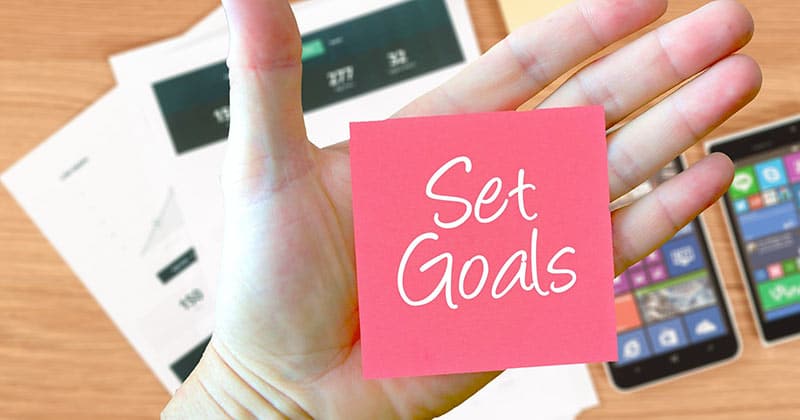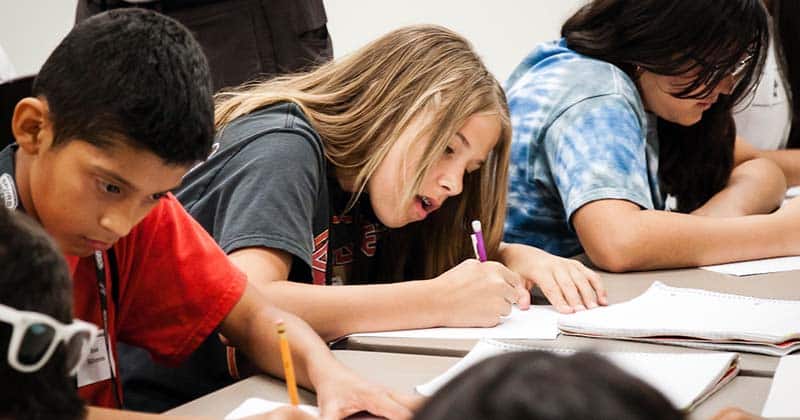Here are 7 essential steps for writing an effective lesson plan. With these considerations in mind you, as an educator, should be able to write good lessons plans consistently and better meet student needs. Structured planning complements other critical aspects of being an effective teacher.
Although teachers often plan for instruction in different ways, as James H. Stronge writes in his book Qualities of Effective Teachers, “The evidence of effective work is seen in the classroom.” The following steps have been proven to work no matter the teacher’s personal style or experience level.
1. Choose and Articulate a Specific Learning Objective

As the saying goes, “If you don’t know where you are headed, then any road will get you there.” Educators should describe what their students should be able to do before lesson planning further.
Learning objectives should be derived from state learning standards and ongoing assessments. A teacher should use this information to backwards plan and create a curriculum map with objectives.
Once the objective is chosen, a teacher must clearly state it. A strong objective begins with the phrase “Students will be able to…” You may refer to Bloom’s Taxonomy of Educational Objectives. The taxonomy includes a list of verbs that are beneficial when writing a learning goal.
2. Decide How to Measure Student Mastery

Student assessment goes far beyond tests and quizzes. As Grant P. Wiggins and Jay McTighe write in their book Understanding by Design, evidence of student learning “may well include traditional quizzes and tests, performance tasks and projects, observations and dialogues, as well as students self-assessments.”
We want to gain the benefits of going beyond an exam style of developing and measuring skill development. Teachers should plan to know by the end of the lesson whether their students mastered that skill by using assessments similar to those described above. The assessment should be aligned with the objective.
3. Plan the Introduction to New Material
This is the “I do” segment of the lesson. To begin, teachers pick three to five key ideas that they wish to articulate during their presentation. If a teacher doesn’t have three ideas, it is likely that the selected objective does not merit its own lesson. Conversely, if you exceed five key ideas, the objective needs to be divided into smaller learning goals.
Prior to articulating the main points, you may choose to utilize a hook to attract student interest. The hook may be anything from (i) a read-aloud, a big question to debate and return to at the end of the lesson to (ii) a simple question that requires students to call upon prior knowledge.
4. Design the Guided Practice
Guided practice is the “we do” segment of the lesson. Teachers should plan what specific examples the class will work through together, as well as decide which students they will call upon.
It is important that you limit personal involvement during this portion of the lesson. Guided practice is an opportunity to catch any potential misunderstandings before independent work.
You should consider ways to involve not just single volunteers but, rather, the whole class. By posing two or three comprehension questions at the end of the guided practice segment, you can ensure that students are ready to work on their own.
5. Plan the Independent Practice
Independent practice is the “I do” segment of the lesson. During this time, students do the work that teachers will use to evaluate the efficacy of their instruction. A teacher should ensure that the task students work on during this time is objective driven, not just a fun activity.
Even though students are the ones doing the heavy lifting during this portion of the lesson, you should think about what work you will do during this time. First and foremost, you should determine which students you need to meet with to provide support or enrichment. You should also plan for extension activities that students can engage in if finished early.
6. Plan the Lesson’s Conclusion
As the old adage says, “Tell them what you’re going to tell them, tell them, and then tell them what you told them.” Just as teachers would not end a research paper without a conclusion, you should not end a lesson without one either.
The conclusion should be quick, taking about a minute. During this time, you might ask students to restate what they just learned or ask questions geared toward preventing common mistakes. If you began with a big question as a hook, this is a fantastic time to return to it.
7. Better Lesson Plans Enhance Student Achievement
Taking a top-level view for a moment, you should use lesson plans to boost student knowledge and results. Craft a set of lesson plans that carries student learning forward progressively. You can begin with a simple, robust style and modest goals. Expand from there.
Lesson plans describe what ought to be happening during class instructional time. An educator should begin by articulating specific learning objectives. Next, the teacher should craft the introduction to new material, guided practice, independent practice, and conclusion segments of the lesson toward that end.
By creating targeted and thorough lesson plans, you as a teacher can improve your students’ understanding and achievement. For more ideas on lesson plans, here are a few of the best sites for creating plans.


Mark
Creating a lesson plan is an important part of the teaching process. It helps the teacher to plan and deliver effective and engaging lessons that meet the needs of the students. With experience, you can create a lesson plan quite quickly and ensure that each class is effective.
Dave Smythe
This looks like a helpful primer for new teachers and teaching assistants (who may have some suggestions for new teachers). Lesson plans should be fluid but you need some sort of organization to start things off and this is a good structure IMO.
Hugh Sellers
This is a wonderful reminder of how much work goes into teaching besides working in the classroom. Your article shows how a teacher’s lesson plan takes time to develop and how it can help a teacher achieve teaching goals. Excellent work showcasing this.
Angel Jenkins
This sounds like a good guide not only for teachers but for people who make presentations. Organization is only the first step to any successful lesson (or presentation) and I enjoyed seeing everything broken down into easy-to-follow steps. It was also refreshing to see you limit things to seven steps instead of going with too many. Anything more tends to be overwhelming.